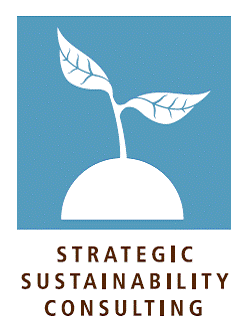Developing a carbon management strategy can be daunting, especially if you don't have specific training. We frequently get calls from prospective clients that have stalled out somewhere in the process, asking for help to get their program back on track. After a number of these calls we started to recognize a pattern, so we put together a 6-step framework that explains our approach to developing an effective carbon management strategy.
While the level of time and effort required for each step will depend on the size of your organization and your industry, all organizations should follow basically the same path. We've already covered step #1 (clarify your goals), so today we're talking about the next step.
#2. Decide on a carbon measurement process.
You can't manage what you don't measure -- but deciding what to measure, how to measure it, when to measure it, and where to capture and store the data can be one of the most challenging pieces of a carbon management strategy. If you're stuck at this stage (or getting ready to tackle it), here are some questions to guide your decision:
- Which carbon calculation standard do you want to use? There are several carbon calculation standards out there, but 99% of companies will end up choosing the GHG Protocol. Why?
The Greenhouse Gas Protocol (GHG Protocol) is the most widely used international accounting tool for government and business leaders to understand, quantify, and manage greenhouse gas emissions. The GHG Protocol, a decade-long partnership between the World Resources Institute and the World Business Council for Sustainable Development, is working with businesses, governments, and environmental groups around the world to build a new generation of credible and effective programs for tackling climate change. It provides the accounting framework for nearly every GHG standard and program in the world - from the International Standards Organization to The Climate Registry - as well as hundreds of GHG inventories prepared by individual companies.
Our advice: whatever standard you choose (e.g. an industry specific standard), make sure that it's built on (and in compliance with) the GHG Protocol. It makes life so much simpler.
- Which emissions categories are most relevant to your organization? In sustainability jargon, this is a question about materiality -- which activities within your operations and value chain generate material emissions? The GHG protocol outlines more than a dozen different categories (like "purchased electricity" and "employee commuting") to choose from (see chart below). In most cases, you want to calculate emissions from Scope 1 (direct emissions) and Scope 2 (indirect emissions), along with a handful of Scope 3 (indirect emissions) categories that make the most sense given your size and industry.
- Which carbon footprint tool makes the most sense? There are a wide variety of options to measure your company's carbon emissions. There are excel spreadsheet models, and dozens of software programs -- both SaaS and enterprise-level options. Some companies even choose to develop their own internal calculators that integrate directly with their internal systems (like ERP, timesheets, business travel reimbursement, etc.). To dive deeper into this process, check out our free white paper on Choosing Sustainability Management Software. It's a vendor-neutral look at how companies can choose the most effective software option, including the pros and cons of some of the most popular software features.
- How will we manage the process? How many facilities are we going to include? Where is the raw data now, and how will we get it into our carbon calculator? Where are we missing data, and how can we best fill in the blanks? What is our timeline? All of these questions should be answered -- at least tentatively -- at this stage of the process.
On Thursday, April 25th, we'll talk about the next step in developing an effective carbon management program (hint: you need to beta-test your process!).
In the meantime, take advantage of our special April offer! We're offering a free 1-hour phone call for companies seeking to develop a climate change strategy. It's only for the first five companies that contact us, so if your organization would like some complimentary assistance in your process, email us today.


